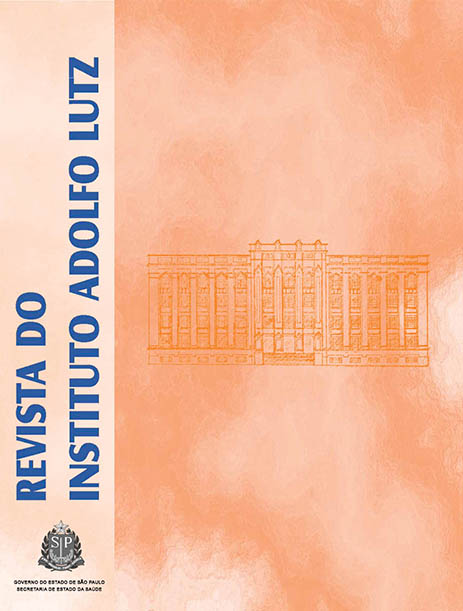Abstract
The present study aimed at developing a new product, the mullet (Mugil platanus) spawn-based caviar. Three formulations were prepared varying the concentration of sodium chloride added: 3.5, 5.0 and 6.5%, corresponding to A, B and C samples, respectively. The physico-chemical characterization results in samples A, B, and C were: humidity: 47.35, 47.83 and 47.65%; ashes: 1.91, 1.88 and 1.87%; lipids: 11.13, 10.77 and 10.80%; proteins: 23.33, 23.37 and 22.91%; carbohidrates: 16.26, 17.15 and 16.78%; caloric value: 258.61, 255.03 and 255.93 Kcal/100 g; pH: 4.5, 4.3 and 4.4, respectively. Considering the formulations applied, the data on microbiological evaluation of the mullet spawn were total viable aerobic count (< 10 CFU/g), thermo-tolerant coliforms (< 3 MPN/g), coagulase positive Staphylococcus aureus (< 102 CFU/g), and absence of Salmonella spp. (25 g). This new product might be an alternative product to be consumed as a new seafood.
References
1. Gonçalves AA, Cezarini R. Agregando valor ao pescado de água doce: defumação de filés de jundiá (Rhamdia quelen). Rev Bras Eng Pesca. 2008; 3(2):5-11.
2. Czeczuga B, Bartel R, Czeczuga-Semeniuk E. Carotenoid content in eggs of Atlantic salmon (Salmo salar L.) and brown trout (Salmo trutta L.) entering Polish rivers for spawning or reared in fresh water. Acta Ichth Et Pisc. 2002; 32(1): 3–21.
3. Tenuta AF, Jesus RS. Aspectos da utilização de carne mecanicamente separada de pescado como matéria-prima industrial. Soc Bras Ciênc Tecnol Aliment. 2003; 37(2):59-64.
4. Bledsoe GE, Bledsoe CD, Rasco B. Caviars and fish roe products. Crit Rev Food Sci Nutr. 2003; 43(3): 317–56.
5. Altug, AG, Bayrak Y. Microbiological analysis of caviar from Russia and Iran. Food Microbiol. 2003; 20:83-6.
6. Arbeloa EM, Uez MJ, Bertolotti SG, Churio MS. Antioxidant activity of gadusol and occurrence in fish roes from Argentine Sea. Food Chem. 2010; 119:586–91.
7. Gessner J, Wuertz S, Kirschbaum F, Wirth M. Biochemical composition of caviar as a tool to discriminate between aquaculture and wild origin. J Appl Ichthyol. 2008; 24:52–6.
8. Wuertz S, Gröper B, Gessner J, Krüger T, Luckas B, Krüger A. Identification of caviar from increasing global aquaculture production-Dietary capric acid as a labelling tool for CITES implementation in caviar trade. Aquac Int. 2009;298: 51-6.
9. Wirth M, Kirschbaum F, Gessner J, Krüger A, Patriche N, Billard, R. Chemical and biochemical composition of caviar from different sturgeon species and origins. Nahrung/Food. 2000; (44):233–7.
10. Argentina. Código Alimentário Argentino/Alimentos Cárneos y afines. [acesso em 02 de fevereiro de 2009.]. Disponível em: [http://www.anmat.gov.ar].
11. Carvalho CVA. Exigência protéica de juvenis de tainha Mugil platanus. [Dissertação de Mestrado]. Rio Grande, Rio Grande do Sul: Universidade Federal do Rio Grande; 2008.
12. Silva SRC. Material didático pedagógico sobre a tainha Mugil platanus – pesca e biologia. [Monografia de Especialização]. Rio Grande, Rio Grande do Sul: Universidade Federal do Rio Grande; 2003.
13. Ranzani-Paiva MJT, Tavares-Dias M. Eritrograma, relação viscerosomática, hepatosomática e esplenosomática em tainhas Mugil platanus Günther (Osteichthyes, Mugilidae) parasitadas. Rev Bras Zool. 2002; 19(3):807-18.
14. Recski J, Carvalho RV, Ruivo UE. A hora dos industrializados. Aquic Pesca. 2007; 27:30-7.
15. Chizzolini R, Zanardi E, Dorigoni V, Ghidini S. Calorific value and cholesterol content of normal and low-fat meat and meat products. Int J Food Sci Tech. 1999; 10:119-28.
16. Wang W, Batterman S, Chernyak S, Nriagu J. Concentrations and risks of organic and metal contaminants in Eurasian caviar. Ecot Env Safety. 2008; 71:138–140.
17. Caprino F, Moretti VM, Bellagamba F, Turchini GM, Busetto ML, Giani I, Palear MA, Pazzaglia M. Fatty acid composition and volatile compounds of caviar from farmed white sturgeon (Acipenser transmontanus). Anal Chim Acta. 2008; 6(17): 139–47.
18. Brunner B, Marx H, Stolle A. Aspects of composition and hygiene relevant to caviar from the market. Archiv fur Lebensmittel-hygiene. 1995; 46(4):80–5.
19. Association of Official Analytical Chemists (AOAC). Official methods of analysis of the Association of Official Analytical Chemistry. 16th ed. Washington (DC); 1997. p. 1141.
20. American Public Health Association (APHA). Compendium of methods for the microbiological examination of foods. 3rd. ed. Washington (DC); 1992. p. 1219.
21. Beirão LR, Damian C, Sant’anna E, Franco BM, Espírito Santo MLP. Avaliação da atividade bacteriocinogênica do Lactobacillus sakei na fermentação da sardinha-verdadeira (Sardinella brasilienses) utilizando glicose como carboidrato fermentescível. B CEPPA. 2003; 21:83-98.
22. Czesny S, Dabrowski K, Christensen JE, Eenennaam JV, Doroshov S. Discrimination of wild and domestic origin of sturgeon ova based on lipids and fatty acid analysis. J Food Sci. 2000; 189:145-53.
23. International Commission on Microbiological Specification for Foods (ICMSF). Microorganisms in Foods. 2. Sampling for Microbiological Analysis: Principles and Specific Applications (2 ed.). 1986. London: Blackwell Scientific Publications.
24. Farias MCA, Freitas JA. Qualidade microbiológica de pescado beneficiado em indústrias paraenses. Rev Inst Adolfo Lutz. 2008; 67(2):113-7.
25. Brasil. Ministério da Agricultura. Secretaria Nacional de Defesa Agropecuária. Laboratório Nacional de Referência Animal. Métodos analíticos para controle de produtos de origem animal e seus ingredientes. Métodos microbiológicos, físicos e químicos. Diário Oficial [da] República Federativa do Brasil. Brasília, DF, p. 23-52, 1981, Seção 1.
26. Hobss BC, Roberts D, Nascimento MA. Toxinfecções e controle higiênico-sanitário de alimentos. São Paulo: Varela; 1993.
27. Neves RAM, Mira NVM, Marquez ML. Caracterização de hidrolisados enzimático de pescado. Cienc Tecnol Aliment. 2004; 24 (1):101-8.
28. Gerasimov GV, Antanova MT. The fish processing industry. New Delhi: Amerind Publishing; 1972.
29. Franco BDGM, Landgraf M. Microbiologia dos Alimentos. São Paulo (SP): Atheneu; 1996.
30. Sea Grant Institute. Calorie, fat and protein of fish and seafods. University of Wisconsin; 1998.

This work is licensed under a Creative Commons Attribution 4.0 International License.
Copyright (c) 2011 Instituto Adolfo Lutz Journal
